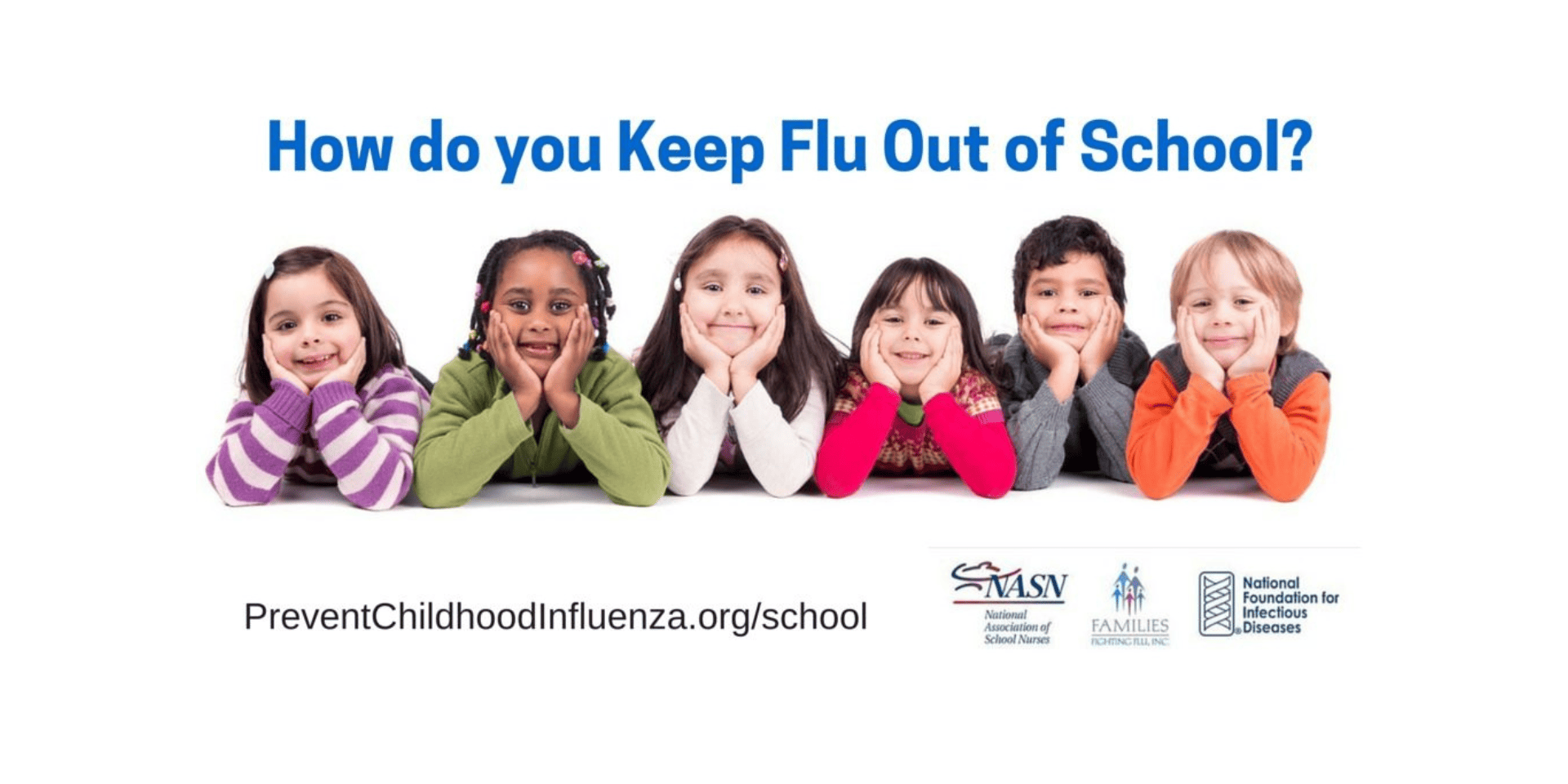
 Special thanks to Angela J.P. Campbell, MD, MPH for this guest blog post on preventing the spread of influenza in schools. Dr. Campbell is a Medical Officer for the Epidemiology and Prevention Branch in the Influenza Division in the Centers for Disease Control and Prevention (CDC) National Center for Immunization and Respiratory Diseases.
Special thanks to Angela J.P. Campbell, MD, MPH for this guest blog post on preventing the spread of influenza in schools. Dr. Campbell is a Medical Officer for the Epidemiology and Prevention Branch in the Influenza Division in the Centers for Disease Control and Prevention (CDC) National Center for Immunization and Respiratory Diseases.
Children are very efficient at spreading illnesses, including illness caused by influenza (flu) viruses. Young children and children with certain underlying health conditions are at high risk of developing serious complications from the flu, including hospitalization and death. Since school-age children spend the majority of their waking hours at school, efforts to create flu-free students can play a significant role in halting the spread of flu at school, within their families, and in their communities.
The Association for Supervision and Curriculum Development (ASCD) and the Centers for Disease Control and Prevention (CDC) Whole School, Whole Community, Whole Child model calls for a collaborative approach to both learning and health in schools. Flu season gives school staff, including nurses, teachers, and administrators, the opportunity to put this collaborative approach into action. Together, school employees and parents/caregivers can help implement the CDC “Take 3” approach to preventing flu in schools. CDC recommends the following:
- Take time to get an annual flu vaccine;
- Take everyday preventive actions to stop the spread of germs (such as limiting contact with others while sick and washing hands often); and
- Take flu antiviral drugs if a healthcare professional prescribes them.
This season, the National Association of School Nurses (NASN), Families Fighting Flu (FFF), and the National Foundation for Infectious Diseases-Childhood Influenza Immunization Coalition (NFID-CIIC) are collaborating on a CDC-funded project, Keep Flu out of School (KFOS). The project involves three school districts in Florida, Illinois, and Missouri and is designed to increase awareness of the “Take 3” approach to flu prevention, and to especially emphasize the importance of annual flu vaccination among families. KFOS targets grades K-5 students, teachers, and families. School nurses are charged with using their pivotal positions as trusted sources of health information in schools to disseminate flu prevention messages to these audiences using a variety of resources and communication channels.
Downloadable resources for students and their parents/guardians, school nurses, and teachers can be found on the KFOS website. Resources are available in English and Spanish and include:
- Communication tools including a sample letter for school nurses and administrators to send home to raise awareness about the importance of flu prevention as well as sample social media content;
- “Are You a Flu Fighter?” coloring book for students with a handy discussion guide that provides a fun way to talk about flu with teachers and parents/caregivers;
- Testimonial stories and videos from parents with first-hand knowledge of the impact of flu on their lives and the lives of their children; and
- Downloadable flyers and posters.
School nurses are also encouraged to join the NASN professional online community to discuss, share, learn from colleagues, and stay current with evidence-based strategies proven to increase flu vaccine uptake in schools, to prevent the spread of flu.
The KFOS initiative is particularly important because of the significant impact flu has on children. Last season, there were 147 pediatric deaths. During past seasons between 80-85% of pediatric flu deaths occurred in children who were not fully immunized against flu. Flu also results in an estimated 20,000 annual hospitalizations in children younger than 5 every season. While seasonal flu vaccination effectiveness can vary, vaccination can reduce the impact of flu each season. During the 2013-14 season, for example, flu vaccine reduced the risk for influenza-associated medical visits by approximately 51% overall. While perhaps not as devastating, during a severe flu season, millions of school days may be lost because children are at home sick. This loss of instructional time can have a negative impact on the educational success of students.
The single best way to protect against the flu is for all persons six months of age and older to get a flu vaccine each year. In addition, taking everyday preventive actions to stop the spread of germs (including flu viruses) and taking flu antiviral drugs if a healthcare professional prescribes them will also help fight flu. School nurses, in collaboration with teachers and school administrators, can send a strong message to students and families about these important actions. Together, with one strong voice, we can “Keep Flu out of School,” leaving students healthy and ready to learn.
To join the conversation, follow NFID on Twitter (@nfidvaccines) using the hashtag #FightFlu, like NFID on Facebook, join the NFID Linkedin Group, and subscribe to NFID Updates.
Related Posts

News Round-Up: Infectious Disease Threats
According to NFID website poll, there are several worrisome infectious disease threats. Read recent news on topics of greatest concern, including avian influenza (bird flu), measles, and respiratory syncytial virus (RSV) …

Vaccines and Heart Health: A Vital Connection
Heart disease can increase the risk of serious or fatal complications from respiratory diseases including COVID-19, flu, and RSV

Harnessing the Power of Local Data
NFID dashboard aims to empower stakeholders with hyperlocal data to increase US adult respiratory vaccine uptake

